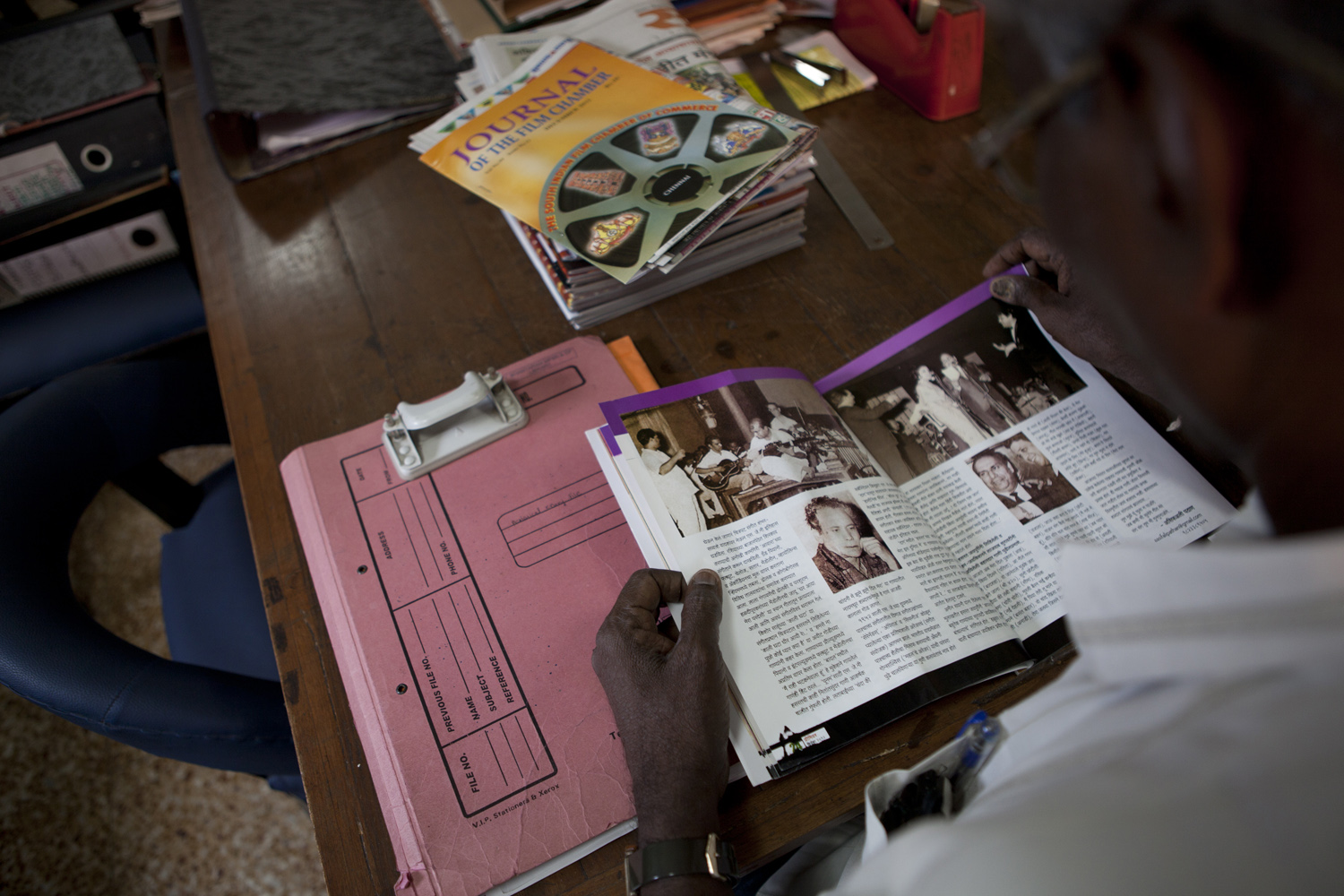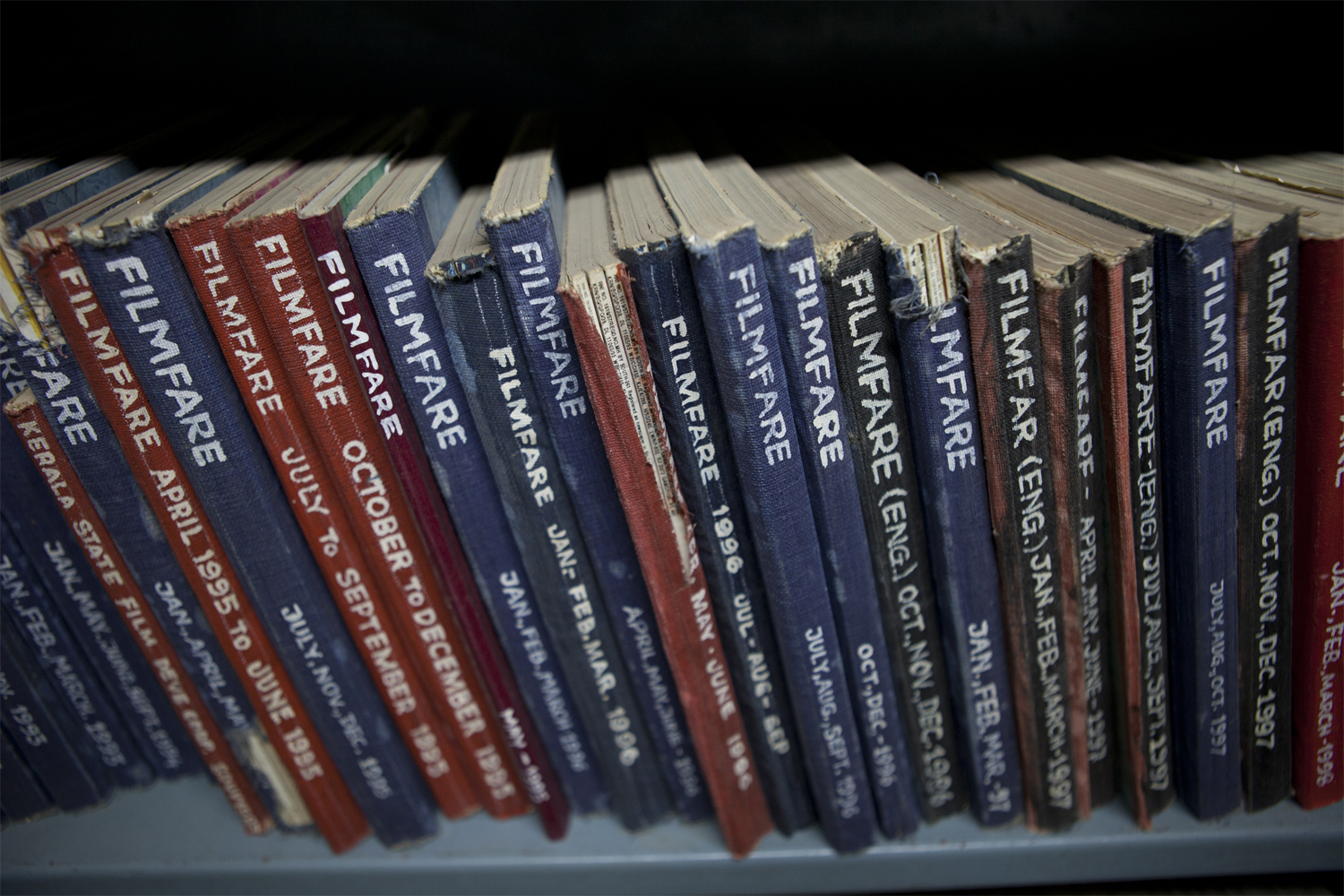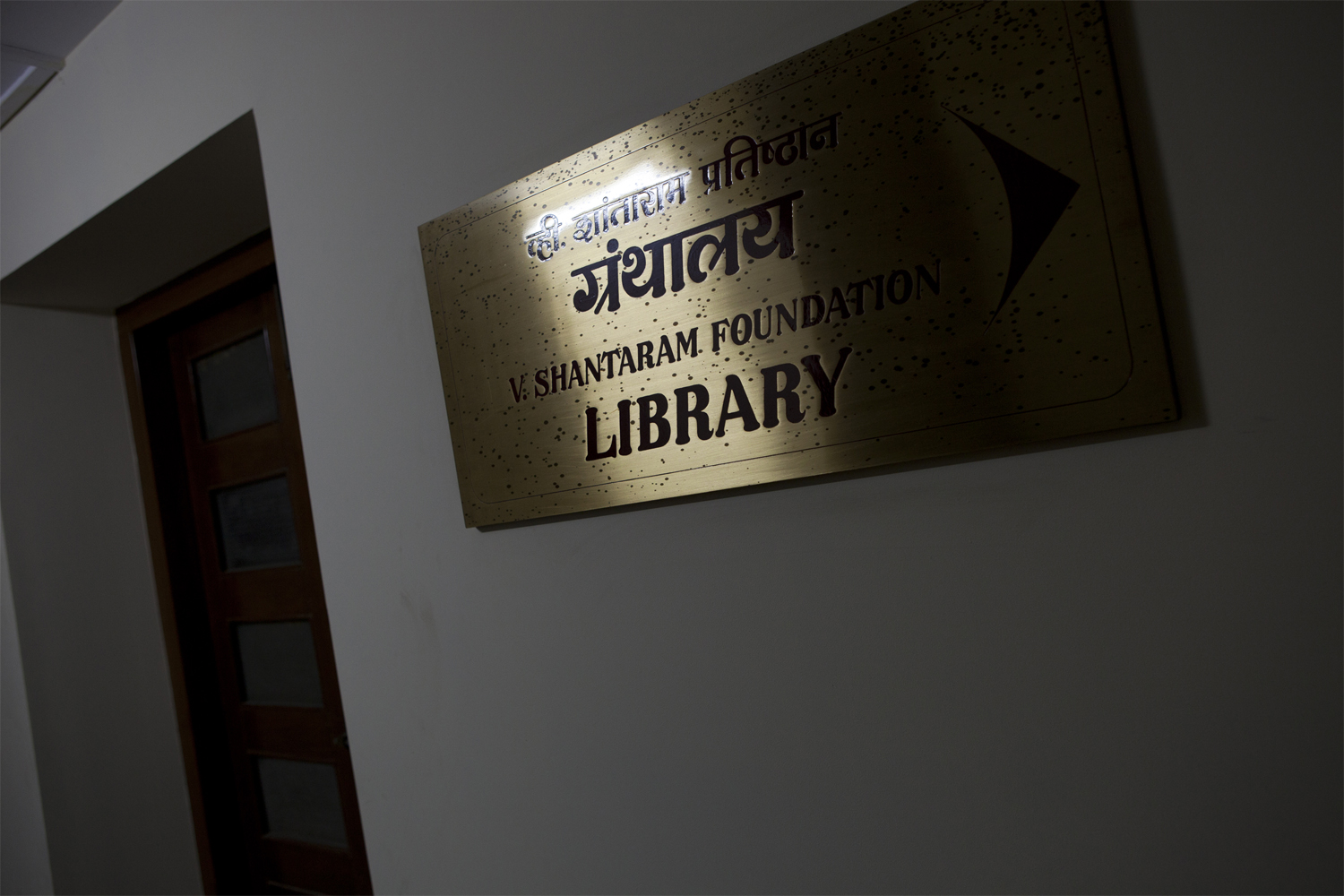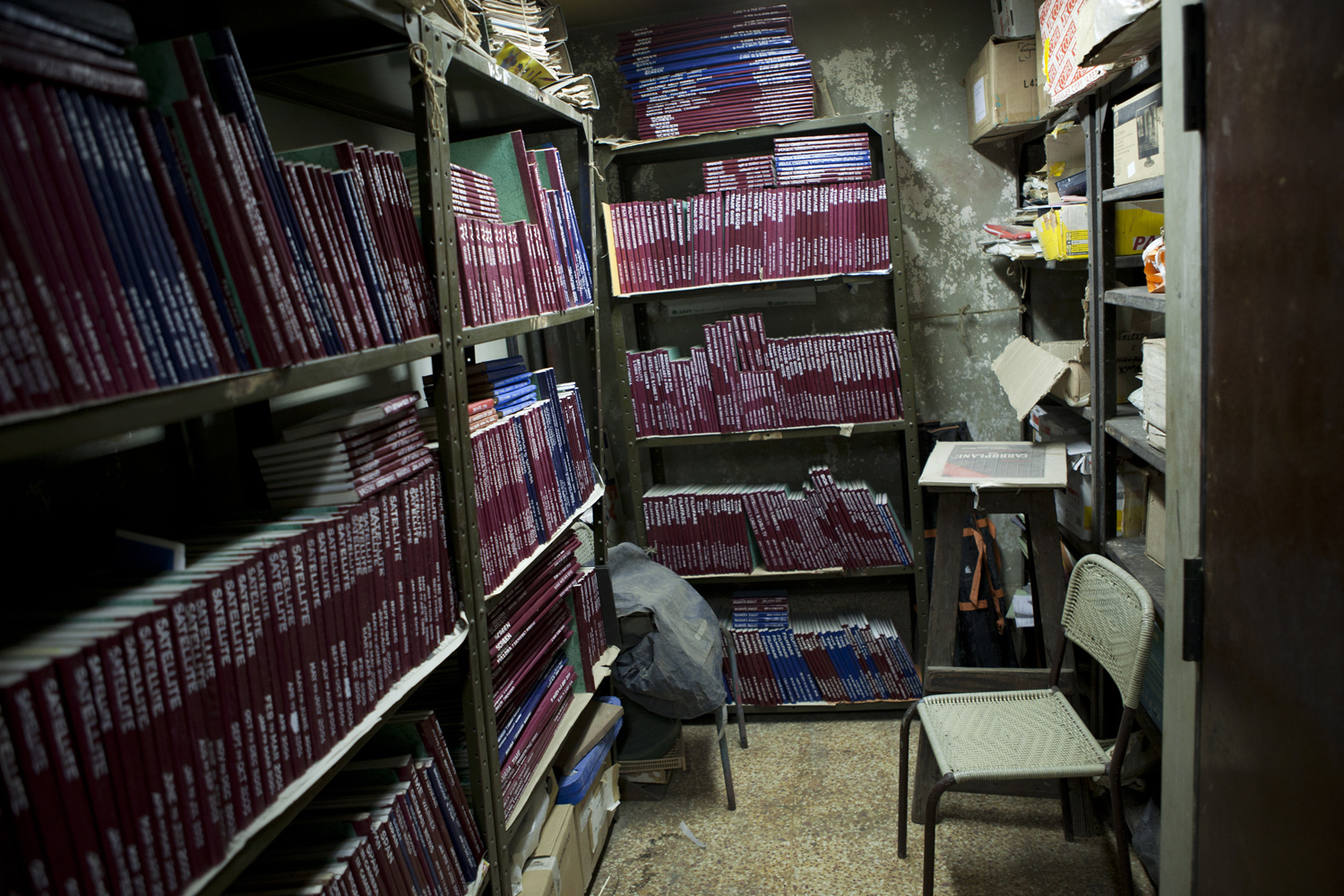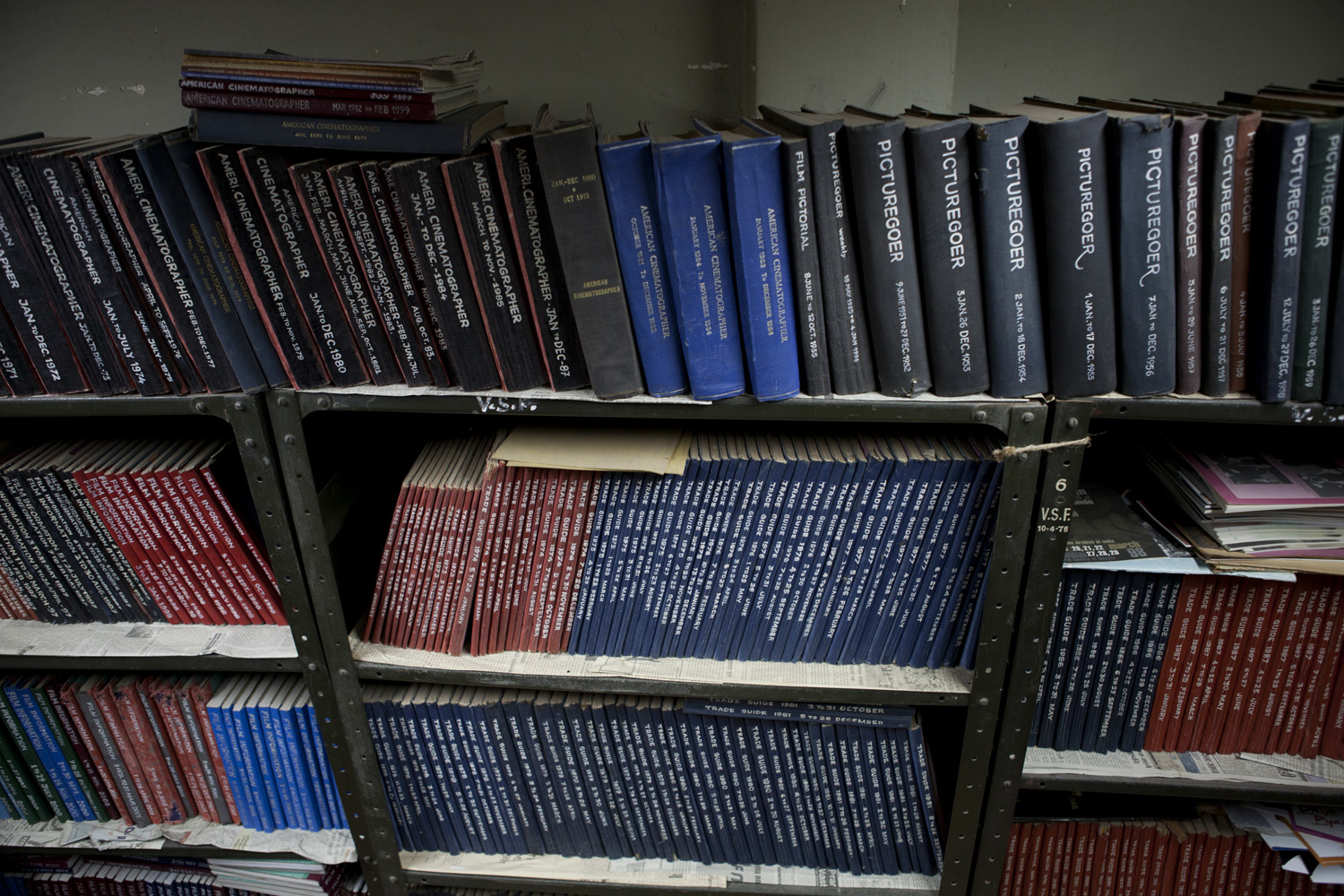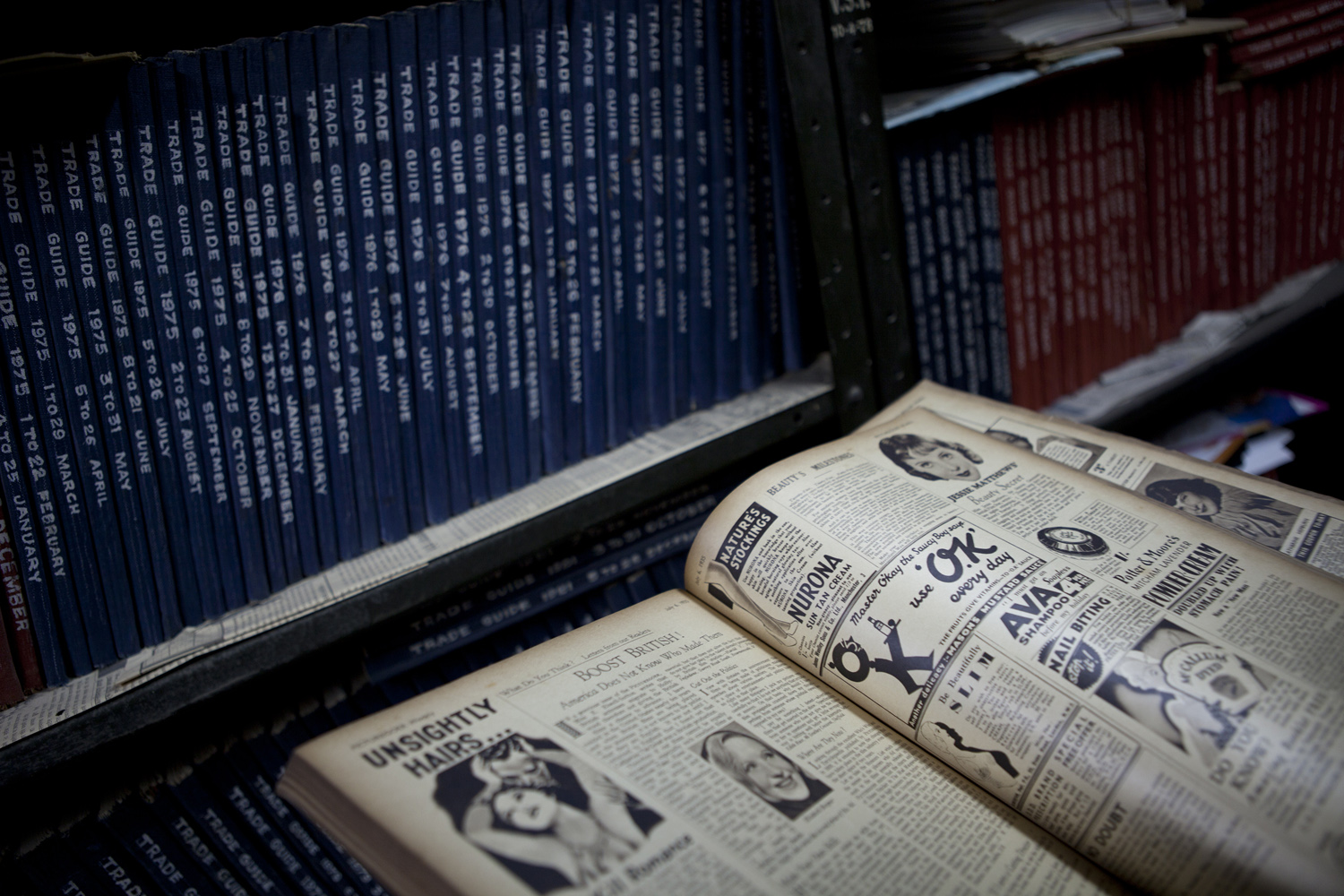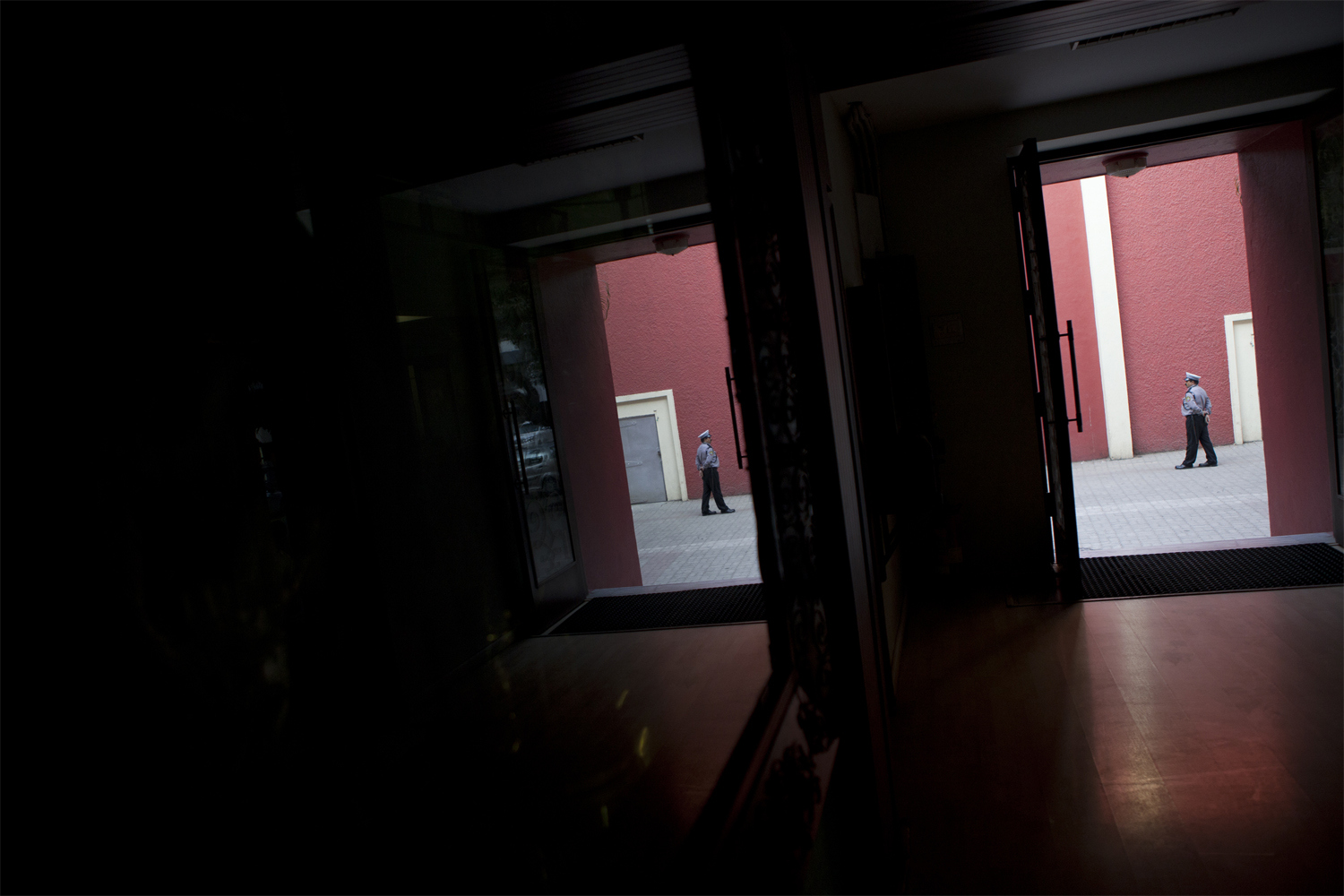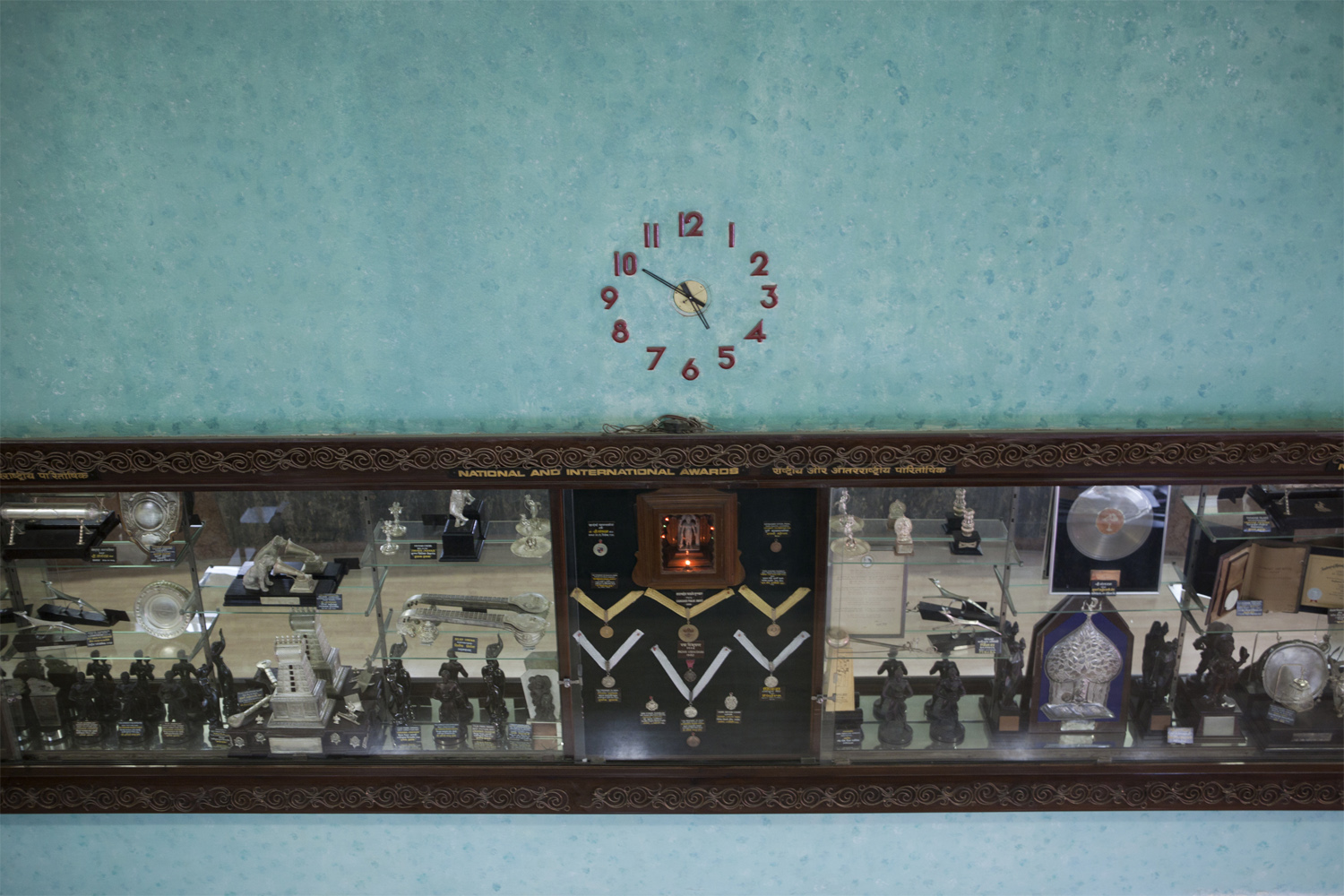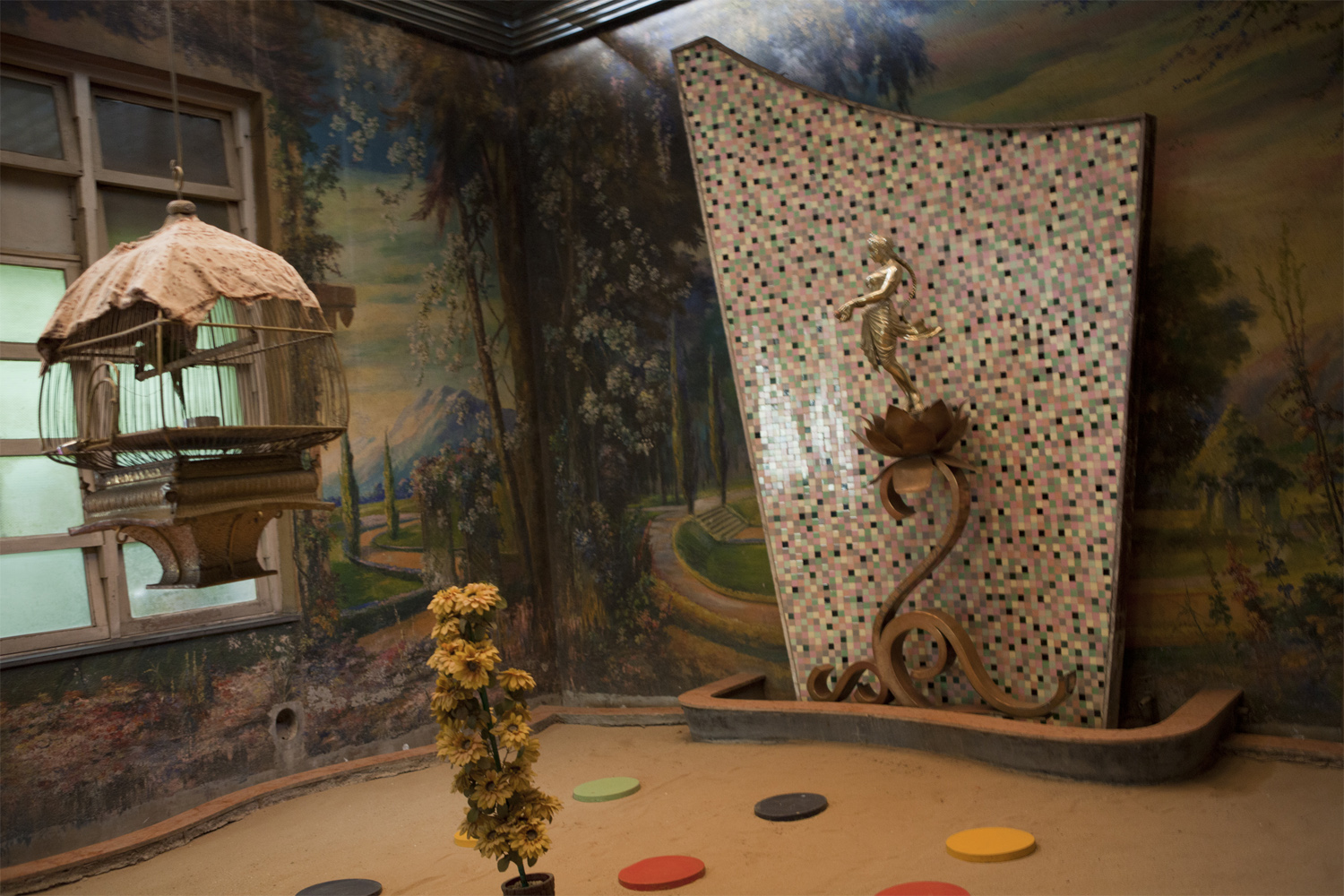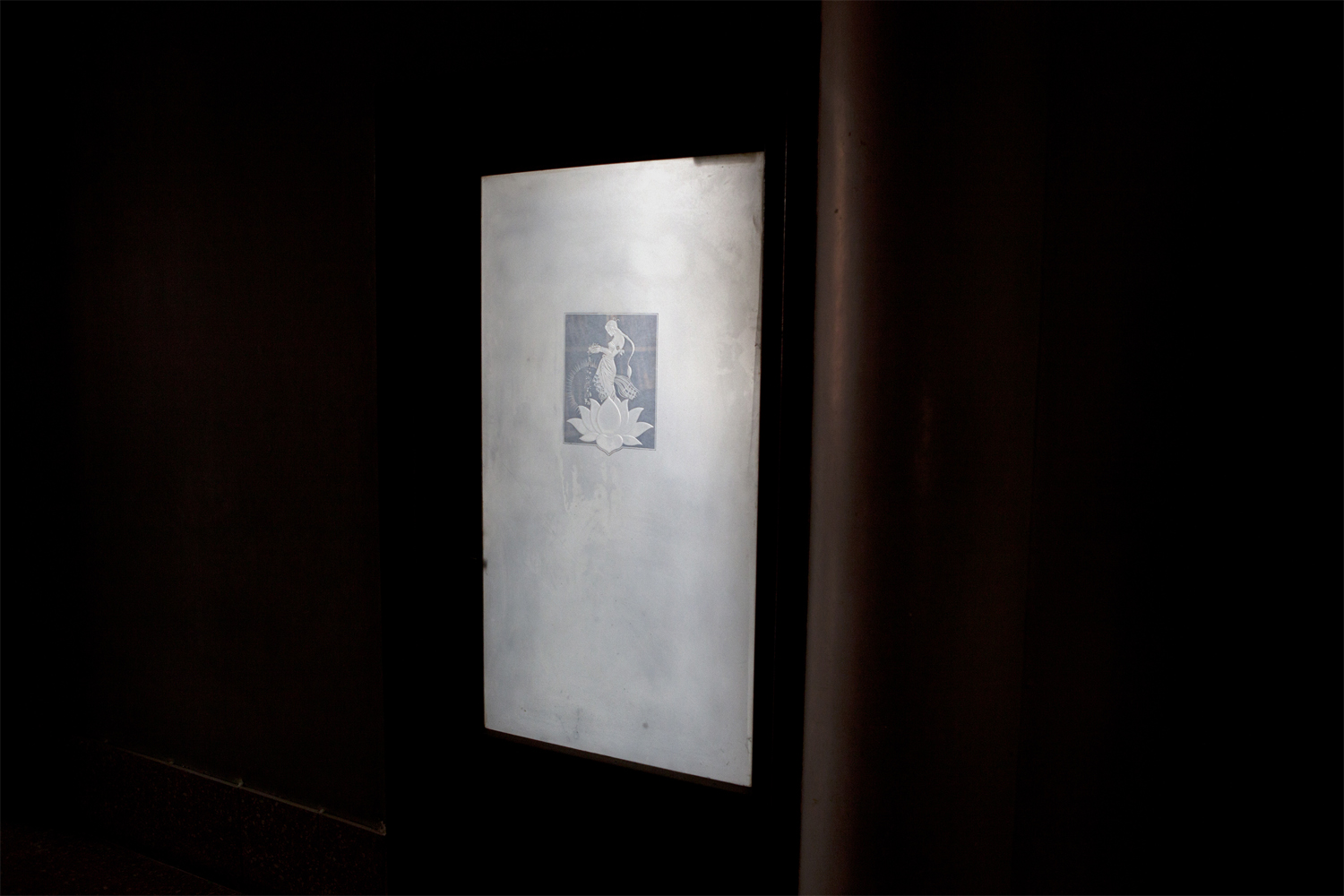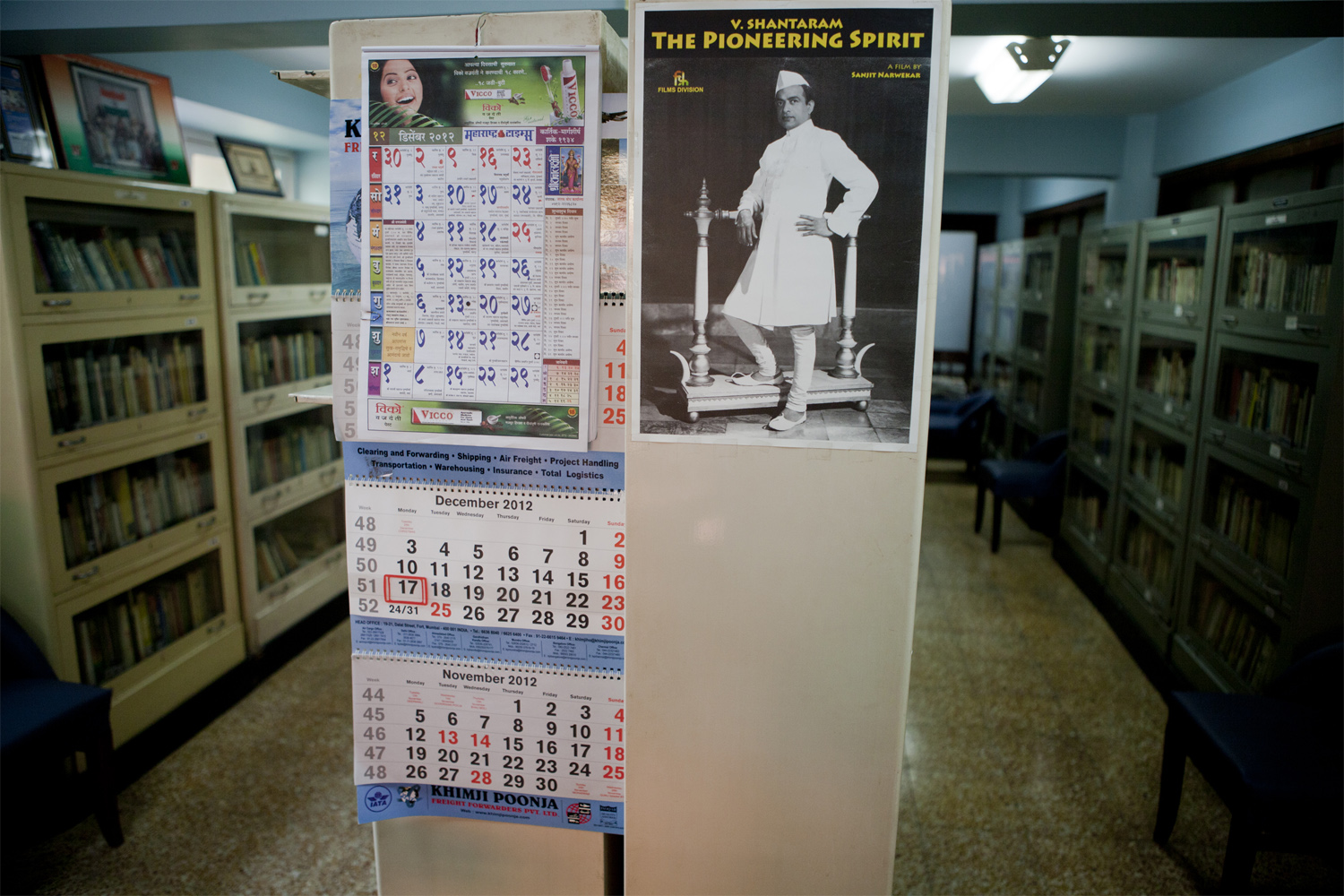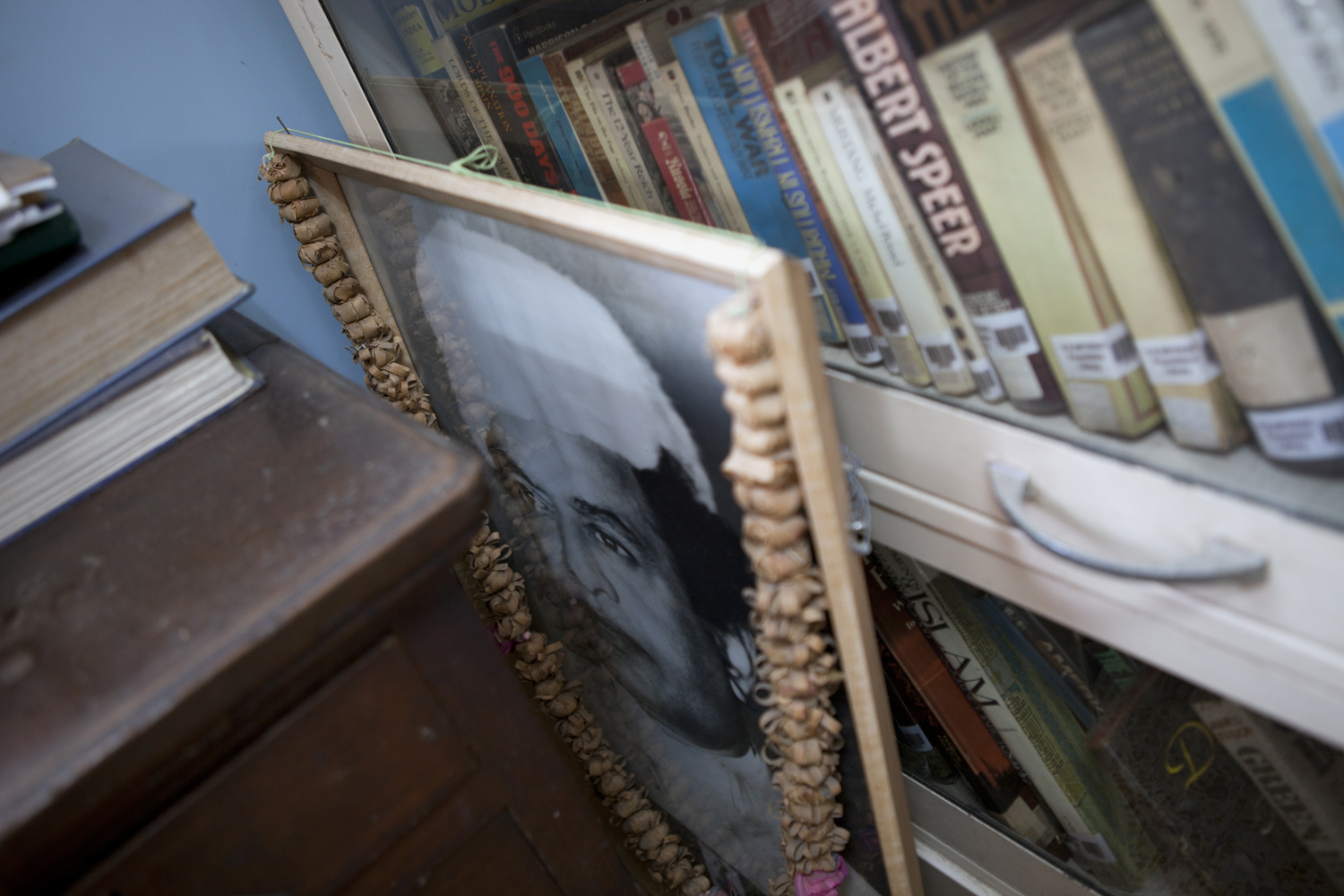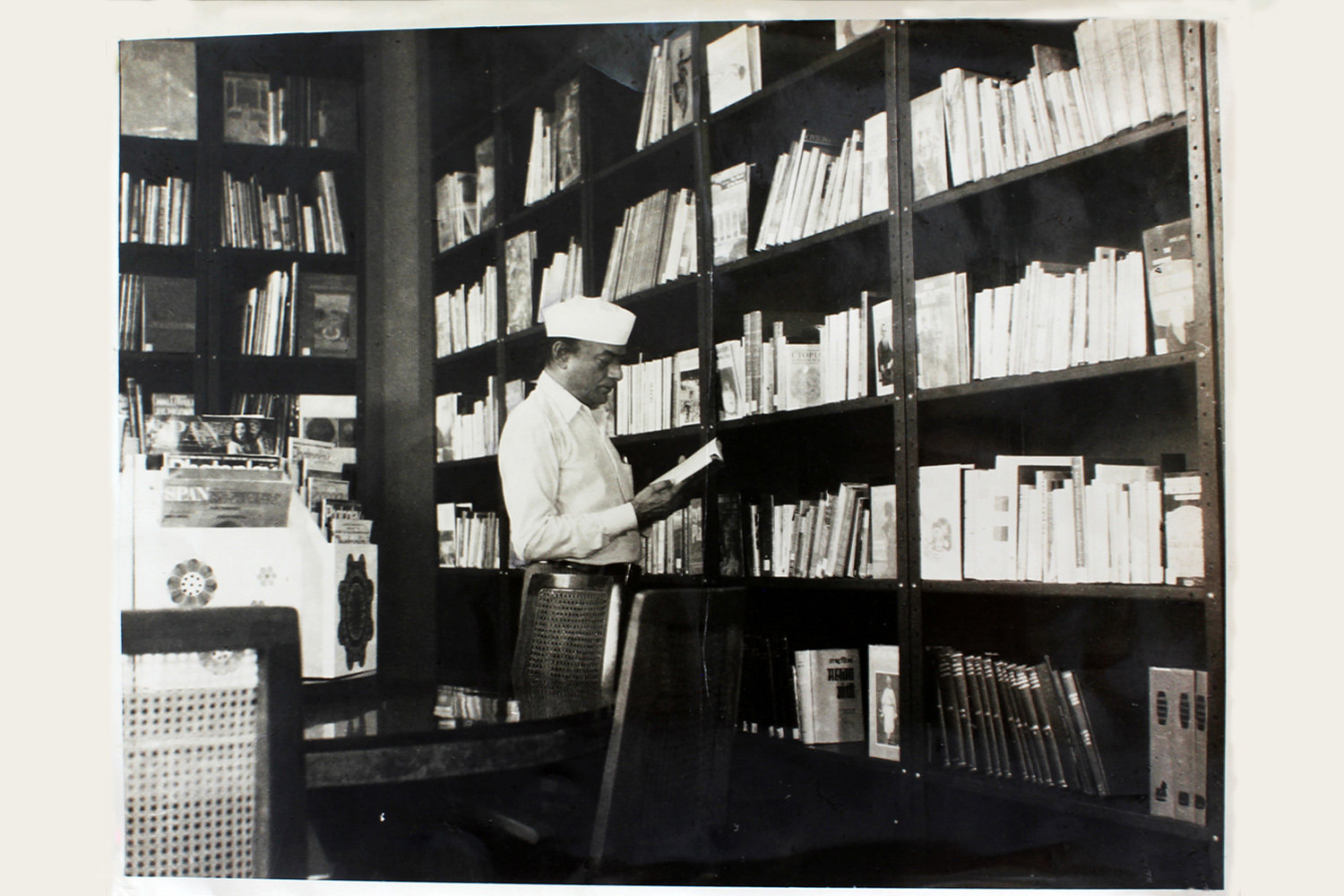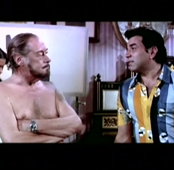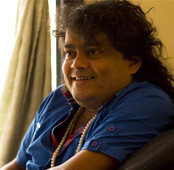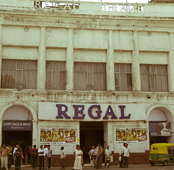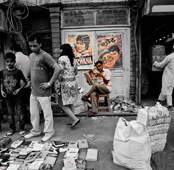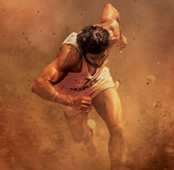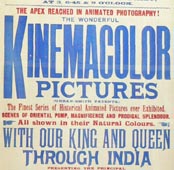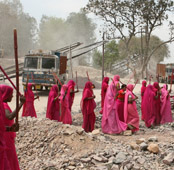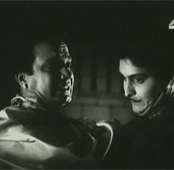-
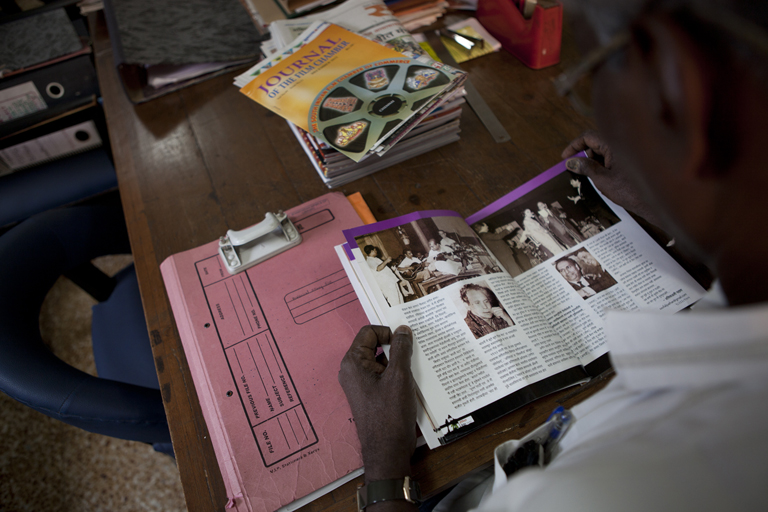 A library attendant browses through a Marathi film journal | Zishaan Akbar Latif for TBIP
A library attendant browses through a Marathi film journal | Zishaan Akbar Latif for TBIP -
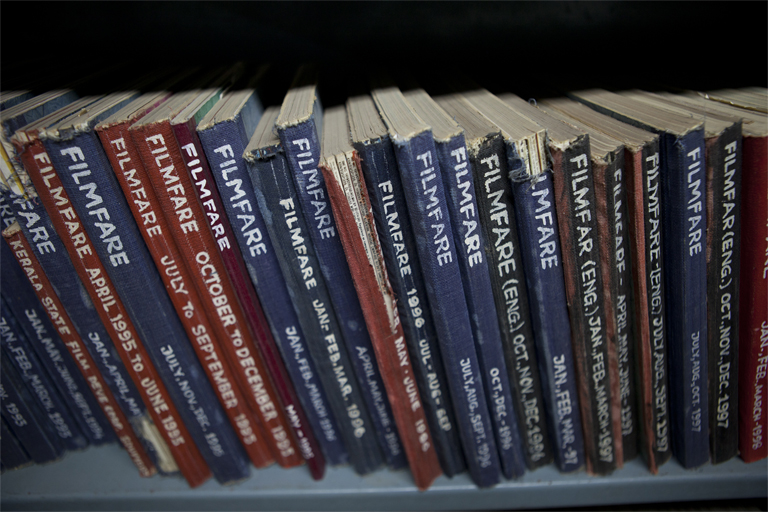 Archived copies of Filmfare magazine | Zishaan Akbar Latif for TBIP
Archived copies of Filmfare magazine | Zishaan Akbar Latif for TBIP -
 A plaque indicating the library in the studio building | Zishaan Akbar Latif for TBIP
A plaque indicating the library in the studio building | Zishaan Akbar Latif for TBIP -
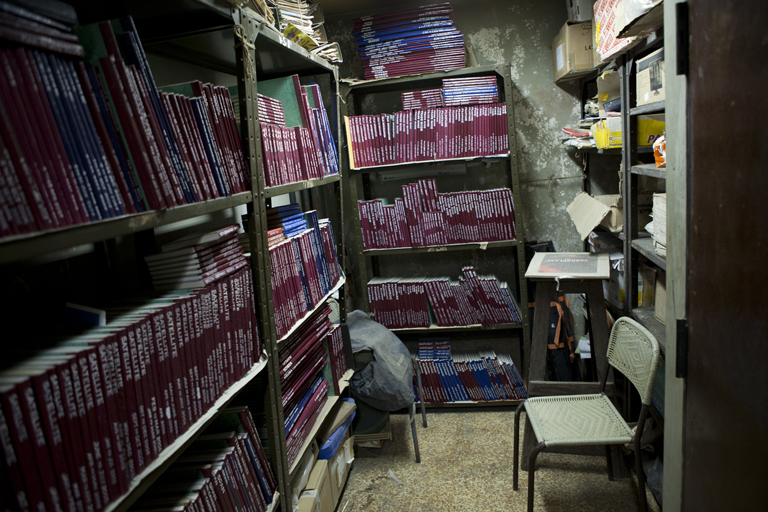 The Foundation keeps a large collection of magazine archives in a separate storage space | Zishaan Akbar Latif for TBIP
The Foundation keeps a large collection of magazine archives in a separate storage space | Zishaan Akbar Latif for TBIP -
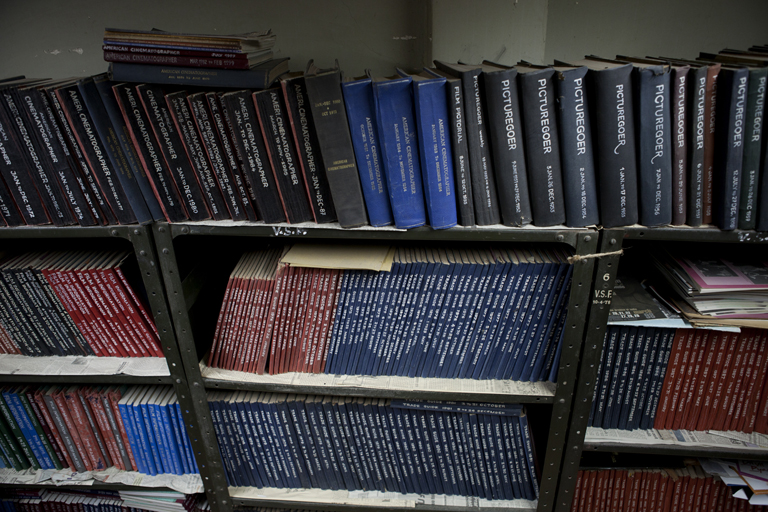 Archived magazines and journals | Zishaan Akbar Latif for TBIP
Archived magazines and journals | Zishaan Akbar Latif for TBIP -
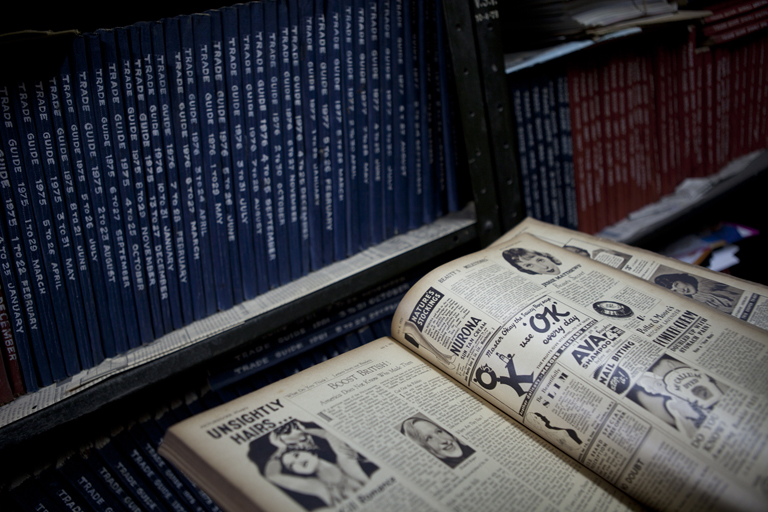 The library has magazine issues that date back to the 1930s | Zishaan Akbar Latif for TBIP
The library has magazine issues that date back to the 1930s | Zishaan Akbar Latif for TBIP -
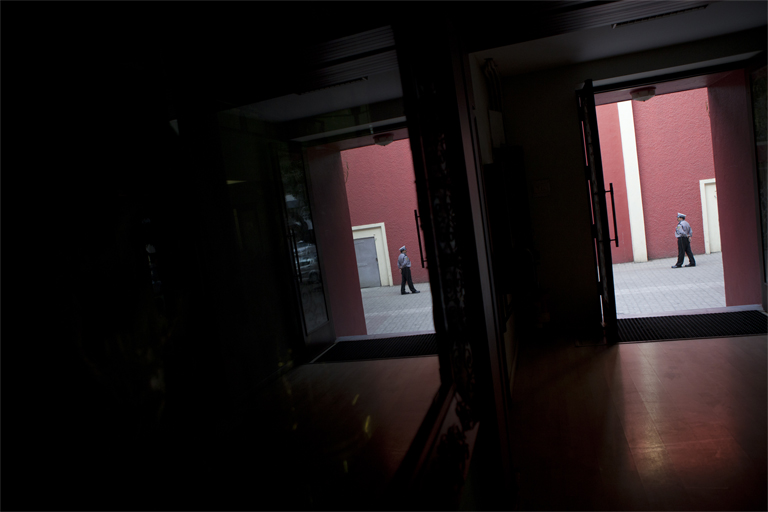 A guard's reflection can be seen in the studio's ground floor showcase | Zishaan Akbar Latif for TBIP
A guard's reflection can be seen in the studio's ground floor showcase | Zishaan Akbar Latif for TBIP -
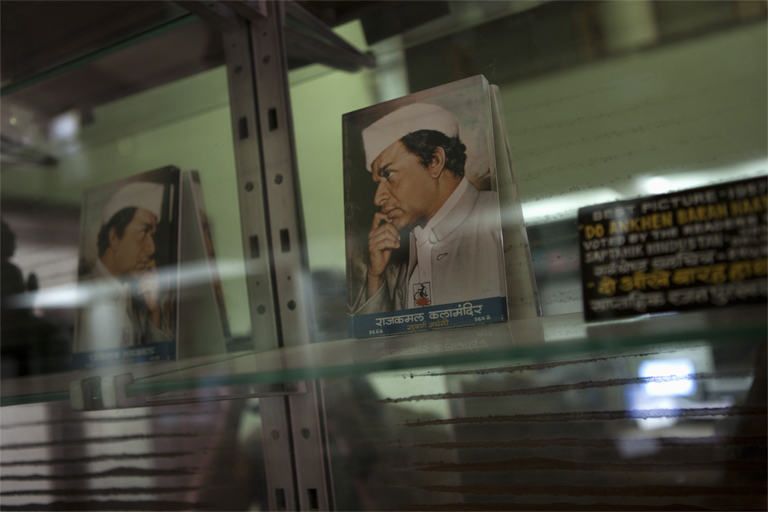 A picture of V. Shantaram next to some of his awards in the studio's showcase | Zishaan Akbar Latif for TBIP
A picture of V. Shantaram next to some of his awards in the studio's showcase | Zishaan Akbar Latif for TBIP -
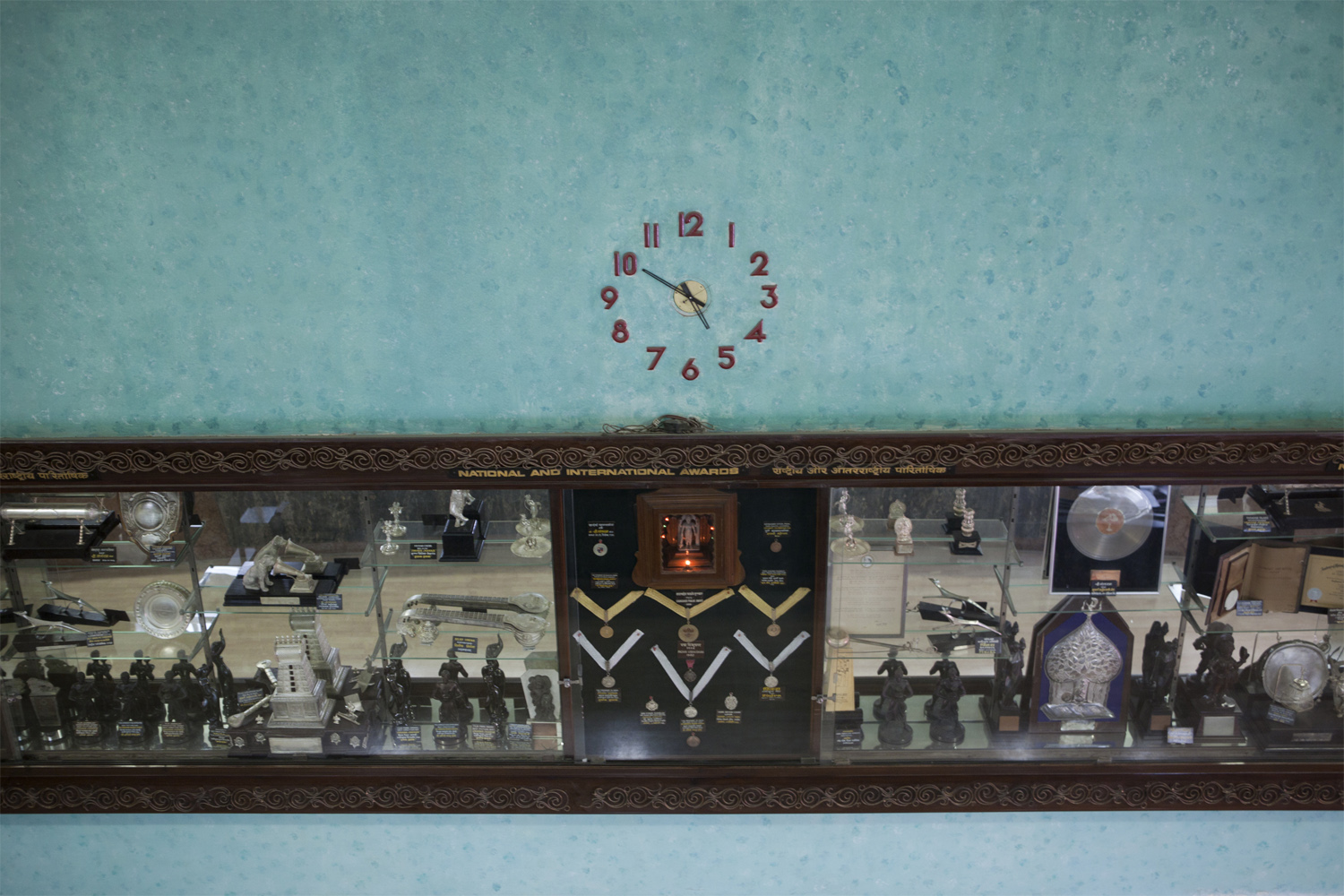 The showcase with various national and international awards won by Shantaram | Zishaan Akbar Latif for TBIP
The showcase with various national and international awards won by Shantaram | Zishaan Akbar Latif for TBIP -
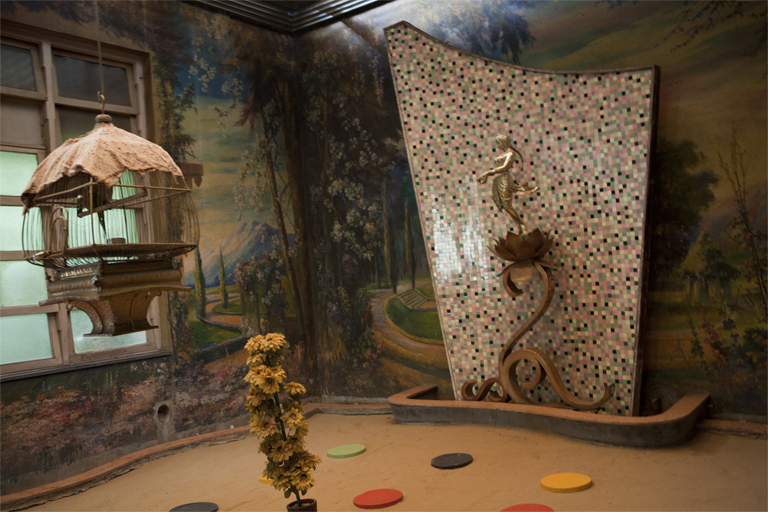 The sculpture of Rajkamal studio's trademark in an older portion of the Studio building | Zishaan Akbar Latif for TBIP
The sculpture of Rajkamal studio's trademark in an older portion of the Studio building | Zishaan Akbar Latif for TBIP -
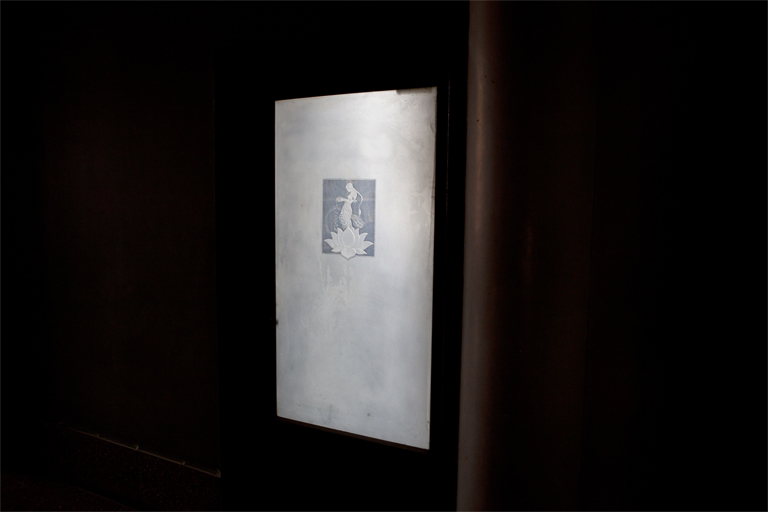 A closed door. Most of the studio's office rooms are empty and unused now | Zishaan Akbar Latif for TBIP
A closed door. Most of the studio's office rooms are empty and unused now | Zishaan Akbar Latif for TBIP -
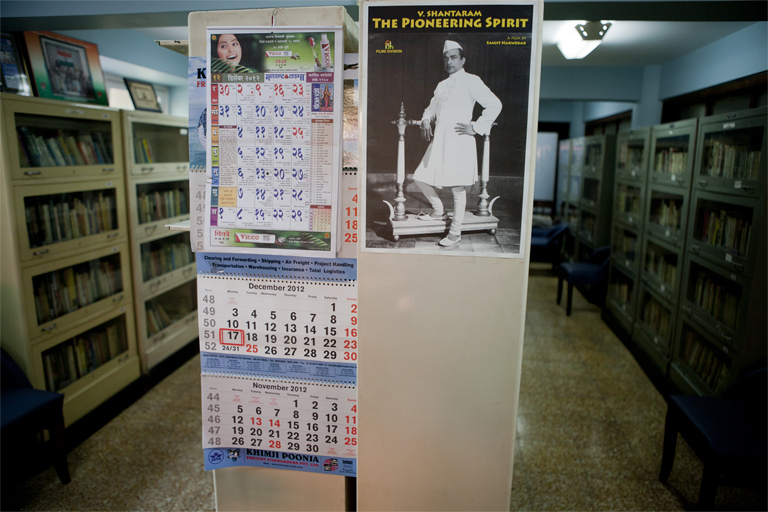 The V. Shantaram Foundation Library | Zishaan Akbar Latif for TBIP
The V. Shantaram Foundation Library | Zishaan Akbar Latif for TBIP -
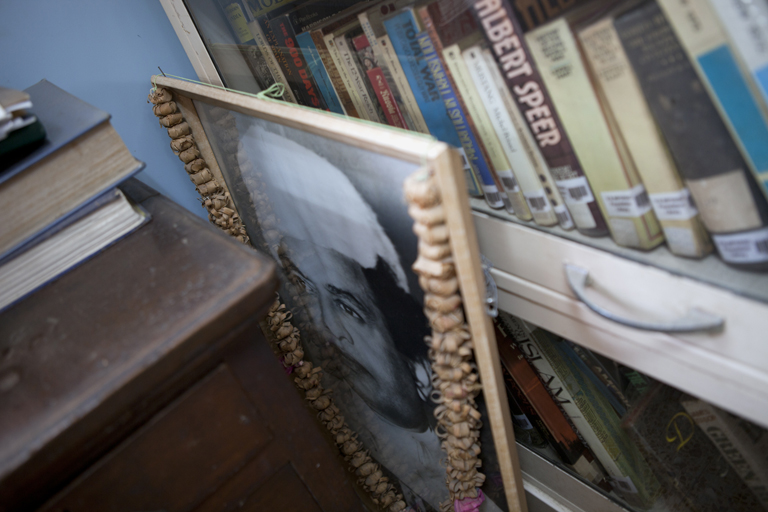 A portrait of V. Shantaram leans against a bookshelf in the library | Zishaan Akbar Latif for TBIP
A portrait of V. Shantaram leans against a bookshelf in the library | Zishaan Akbar Latif for TBIP -
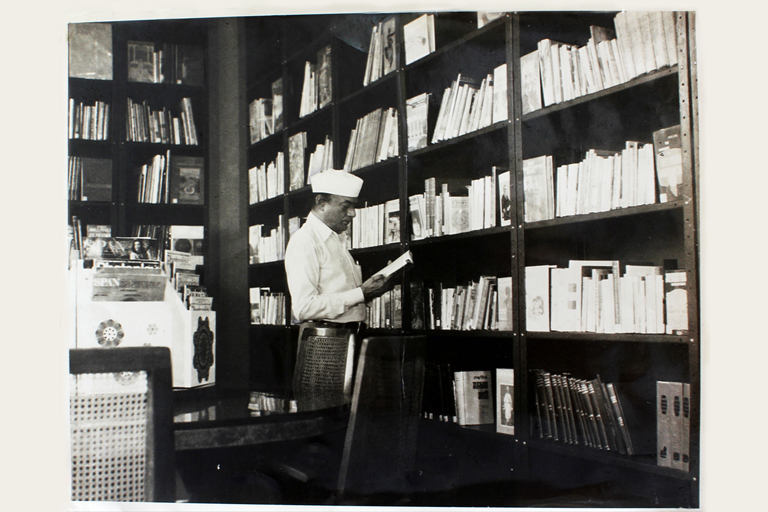 An old photograph of V. Shantaram browsing through some books in the original library
An old photograph of V. Shantaram browsing through some books in the original library
Filmmaker V. Shantaram’s library is not as well known as his movies but it has a story to tell, all the same
A middle-aged bespectacled man is sitting at the desk. He scrutinizes a poster for a Marathi film. He consults some printed pages before him, before making handwritten notes in Marathi on another page. He re-checks it. Satisfied, he moves onto the next poster. He does this with a stack of roughly 100 other film posters. The room is cool with the blast of two large air conditioners and two small fans. Yet the strong musty smell of old books sits heavy in the air. We are in a library. A very unlikely library.
This library, at Rajkamal Studios in Parel, Mumbai, is part of the legacy of a legend of Indian cinema— the V. Shantaram Motion Picture Scientific Research & Cultural Foundation. It was once Shantaram’s personal library, which he opened up to the public in 1981, nine years before his death. He was 80 years old at the time. The foundation was set up by him in 1977 with the objective of creating a space that would encourage technical innovation and foster an interest in Indian cinema both in the creative and the research spheres. His son, Kiran, 70, remembers his father as an avid reader. “Whenever he got some spare time, he’d always go through books,” he says. “(He read) books on filmmaking, editing, photography, sound recording, all technical books. He didn’t kill his time, sitting idle, doing nothing.”
After Shantaram’s death in 1990, Kiran, then 48, took over as Chairman of the foundation. Over the years, Kiran remembers a few well known filmmakers using the library when they came to shoot at the studio. Yash Chopra, who started Yash Raj films from the offices of Rajkamal Studios after leaving B.R Chopra, as he didn’t have an office to work out of, was an occasional visitor. As was Subhash Ghai. Satyajit Ray, Mrinal Sen and Tarun Majumdar were more regular visitors.
In the early nineties, Kiran invited Sanjit Narwekar, film historian and journalist, to help create a research centre for Indian cinema. “At that point in time, interest was shown by international academics in the study of Indian cinema. My dream was to build a centre that would attract people doing research, or simply those interested in Indian cinema… to read, discuss films, talk to one another, or network,” says Narwekar. The research library’s vast archives and eclectic collection owes its existence to Narwekar and his team who worked for 3 years to expand Shantaram’s original collection of film related books. They even organized a research conference in 1994, just after the centre was inaugurated. Research papers were presented and talks were held. The conference was well attended by several research scholars, archivists and cineastes from across the country. P.K. Nair, the eminent film archivist, was one of the attendees. They began a database of films from various regional film industries. “From 1994 when it was formally inaugurated by B.R. Chopra till around 1996 to 1997 it was ok. After that I don’t know what (happened),” says, Narwekar. The foundation found it difficult to find adequate funds to sustain the library and Kiran and Narwekar’s plans fell through. The foundation’s activities at that time included financing the manufacture of magnetic tapes, an electronic footage counter and other technical developments, as well as cultural activities like exhibitions, film screenings and the V. Shantaram Awards. Narwekar moved on and the trust continued to buy books, albeit infrequently. It also continues to buy trade journals and magazines such as Screen India and Filmfare. Now they are looking to start a DVD library.
The foundation and its libraries were located in a building separate from the main studio offices until the surrounding area was sold for redevelopment in 1995. Now they share a building with the studio. The foundation still brings out a booklet with details on every Marathi film produced in a given year. The man at the table is doing just this. The slow struggle to hold on to a glorious past.
“Now nobody (uses the library). There are very few, only one or two come regularly. Now these film producers are not interested in classical films, artistic films, at all. Whatever films they are producing now, they are… I don’t think they are films. They are just like a nautanki,” says Chandraram Patil, a long time employee with Rajkamal Studios, and currently Kiran’s personal secretary. “Students (come here), because it is part of their education. We also give the books out.” One can avail of the library’s facilities by becoming a member at Rs 1750 (this is inclusive of a Rs 1000 refundable deposit) per year, or paying a daily reading fee of Rs 50.
The library is a treasury of archival material. Perfectly preserved copies of the now defunct Film India magazine line a glass paneled book shelf. An editorial by film journalist and publisher Baburao Patel in the January 1943 issue of Film India reads, “The year 1943 will become a memorial milestone in the history of the Indian film industry… And that memorial milestone will also perpetuate the memory of Mr. V. Shantaram, India’s greatest director… The one big thing he had himself sworn to do was to found the Film Academy of India where the future youth of the country may get the right training to fulfill its aspiration in art… ”
The editorial outlines Shantaram’s rise from poverty (he went without lunch for years as he could not even spare six paise for a cup of tea), his desire for creative fulfillment, and his eventual success as a director and producer. “What use is my success and money, for that matter my very existence, if I cannot help others along the journey and make it a bit easier for them,” Patel quotes Shantaram as saying.
A few pages down is a double-page advertisement for the Indian Film Academy, announcing admissions. The Academy offered practical training and lectures by film personalities. The courses lasted for two years (four terms) and accommodated only two to four students in a course. The only exception was the acting course, which allowed for up to 50 students. The costs ranged from Rs 100 to 600 per term. The lucky few would have been taught on the sets of Shantaram’s award winning Shakuntala (1943). This was 17 years before the Film and Television Institute of India (FTII) was established in Pune. “The Film Academy ran for only one year before it shut down,” says Narwekar. The only person of note to emerge from it was documentarian and film historian B.D. Garga.
The books in the library reflect Shantaram’s continued quest for the modern, the latest developments, the need to constantly innovate and create. The introduction to From Script to Screen by Sir Alexander Korda reads: “There can be no resting on our laurels, for in the film industry, above all others, to rest is to rust.” The book is a look at the production process of the British film industry during the 1930s.
Shantaram lived by these words. At the grand age of 90 he had planned a 100-episode-long epic movie series titled Uttar Mahabharata. The series would pick up at the end of the ancient epic Mahabharata and stretch over 5000 years of human history, ending with the turn of the 20th century. The plan was to enlist 10 new directors from the Indian film industry, and each director would make 10 films. Shantaram would produce the films and guide the directors. “That would have been huge,” says Kiran. “He had said: I’d have to take a rebirth for this.”
One can imagine Shantaram consulting H.W Hellyer’s Tape Recorder Servicing Manual (1973, 2nd edition), while arranging for the manufacture of indigenous magnetic tapes, sync cassette tape recorders and building the four-track stereo in his studio. The book shares shelf space with books on schizophrenia and rural women’s health. This is not peculiar to the ‘sound-recording’ section. Mythology— An Illustrated Encyclopedia rests incongruously among books on Goya, sculpture and graphic art, instead of in the ‘reference’ or ‘epic’ sections.
“Mr. Shantaram was very particular about everything,” says Chandraram Patil. “When I joined him I used to come early and clean the desks before he arrived, and sharpen the pencils. He used to come in the morning and do this… ” Patil wipes his hand over the edge of the desk to see if it’s dust free.
This was then. Today, this is a library without a librarian. In a studio with barely any staff. Empty corridors stretch on— clean, smelling of institutional phenol after a thorough swabbing. Shantaram’s presence lingers on in these corridors, along the marbled floors, in the intricate brass work, in large monogrammed Vs on frosted glass doors. A building steeped in the ceremony that recalls the golden age of Bollywood. A large brass bell hangs from the security counter near the front gate. It still tolls every day, at the start and end of work and to signal the beginning and end of the lunch hour. The punch out clock, a wooden box like contraption still functions. About 20 punch out cards lie, to the side, in a wood rack. This is the studio that had a staff of over 100, which worked three shifts, 24 hours a day. Now it simply seems to lie in wait. Perhaps, of the second coming Shantaram spoke of at 90.
We are awaiting that second coming Mr. Shantaram.
The Books Keeper
ArticleMay 2013
 By Alyssa Lobo
By Alyssa Lobo
Alyssa Lobo is Junior Correspondent at The Big Indian Picture



